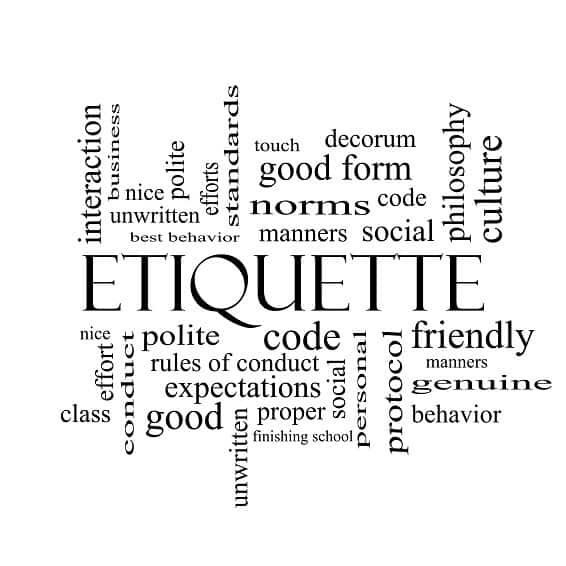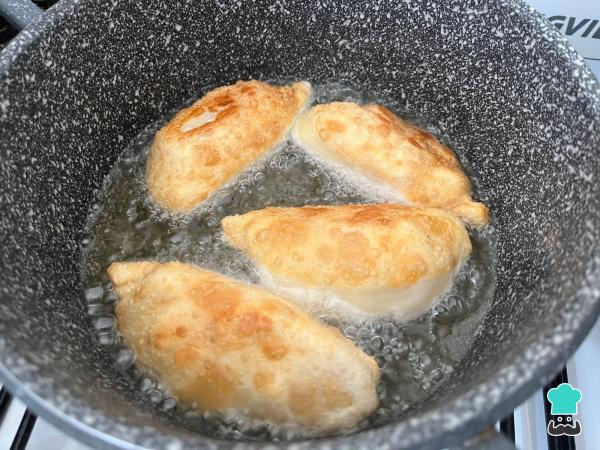Navigate Office Lunch With Confidence: 6 Key Etiquette Rules

Table of Contents
Choosing Your Meal Wisely
The first step to successful office lunch etiquette involves making thoughtful food choices. Your selection reflects not only your personal preferences but also your awareness of workplace dynamics.
- Consider the setting: A formal restaurant calls for a more refined choice than a casual cafeteria lunch. In a formal setting, a pasta dish or a grilled fish might be appropriate, while a salad or sandwich works well in a more relaxed environment.
- Keep it appropriate: Avoid overly messy foods like spaghetti or anything with strong, pungent odors that could be bothersome to others. Think about the ease of eating – you want to be able to enjoy conversation without wrestling with your food.
- Dietary restrictions: This is crucial for workplace harmony. Before ordering, politely inquire if anyone has any allergies or dietary restrictions.
- Pro-Tip: Check beforehand if possible, perhaps through a group email or informal poll.
- Example: If unsure, opting for a simple salad or sandwich is a safe bet. It shows consideration and avoids any potential discomfort.
- Budget consciousness: Be mindful of the price range, especially if it's a group lunch and the bill is shared. Choose a dish that falls within a reasonable price bracket to avoid any awkwardness.
Mastering the Art of Conversation
Lunchtime conversations are a valuable opportunity to build relationships. However, knowing what to discuss (and what to avoid) is essential for positive workplace interactions.
- Engage in positive and inclusive conversations: Focus on work-related topics, shared interests, or current events (avoiding controversial subjects). Include everyone in the conversation, making sure everyone feels heard.
- Avoid controversial topics: Politics, religion, and personal gossip should be off-limits during work lunches. These topics can quickly create divisions and discomfort.
- Active listening: Show genuine interest in what others are saying. Make eye contact, nod your head, and ask follow-up questions to show engagement.
- Professional demeanor: Maintain a respectful and courteous attitude throughout the lunch. Even disagreements should be handled with tact and professionalism.
- Example: Start conversations with open-ended questions like, "What are you working on these days?" or "What are your plans for the weekend?"
- Tip: Prepare a few conversation starters beforehand to avoid awkward silences, especially if you are not familiar with everyone present.
Handling the Bill with Grace
Navigating the payment process smoothly shows respect and consideration for your colleagues.
- Clarify expectations beforehand: Before ordering, discreetly clarify whether the bill will be shared, paid individually, or if someone is covering the cost. This avoids any last-minute surprises or awkwardness.
- Offer to contribute fairly: Don't hesitate to offer to split the bill or contribute your fair share, especially if it's a group lunch. It shows consideration and teamwork.
- Tip appropriately: Follow standard tipping etiquette for the restaurant's setting and service. This demonstrates respect for the service staff.
Punctuality and Preparation
Showing up on time and being prepared demonstrates respect for your colleagues' time.
- Arrive on time: Punctuality is crucial for any professional setting, including work lunches. Being late disrupts the flow and shows a lack of consideration.
- Be prepared: Have your payment method ready (cash, card, or mobile payment) if paying individually. This avoids delaying the group after the meal.
- RSVP promptly: Responding quickly to lunch invitations helps with planning and ensures everyone can attend.
Table Manners Matter
Even seemingly minor details in table manners contribute to a positive image.
- Basic etiquette: Use your utensils correctly, avoid talking with your mouth full, and practice good posture. These are fundamental aspects of polite dining.
- Phone etiquette: Keep your phone silenced and avoid excessive checking. Focus on your colleagues and the conversation at hand.
- Clean up: Offer to help clear the table or tidy up after the meal. This shows consideration for the restaurant staff or your colleagues if eating in the office.
Networking Opportunities
Use office lunches as a strategic opportunity for professional networking.
- Use lunch as a chance to connect with colleagues: Build relationships beyond the typical office setting. Lunch provides a relaxed environment to get to know colleagues better.
- Learn about others' work and experiences: Ask about their projects, challenges, and aspirations. This shows interest and builds rapport.
- Expand your professional network: Use lunch as a way to connect with people from different departments or teams.
- Tip: Use lunch as an opportunity to build relationships beyond the typical office environment, leading to potential collaborations or mentorship opportunities.
Conclusion
Mastering office lunch etiquette can significantly enhance your professional image and build stronger relationships with your colleagues. By following these six key rules – choosing your meal wisely, engaging in thoughtful conversations, handling the bill with grace, prioritizing punctuality, observing proper table manners, and utilizing networking opportunities – you can navigate office lunches with confidence. Remember, even seemingly small details contribute to a positive workplace experience. So, practice good office lunch etiquette and enjoy your next meal!

Featured Posts
-
 Reselling Glastonbury 2025 Tickets A Guide To Dates Times And Costs
May 31, 2025
Reselling Glastonbury 2025 Tickets A Guide To Dates Times And Costs
May 31, 2025 -
 April 9th Nyt Mini Crossword Clues And Answers
May 31, 2025
April 9th Nyt Mini Crossword Clues And Answers
May 31, 2025 -
 Receta Facil De Empanadas De Jamon Y Queso Sin Horno
May 31, 2025
Receta Facil De Empanadas De Jamon Y Queso Sin Horno
May 31, 2025 -
 Toxicology Report Released Princes Death On March 26th
May 31, 2025
Toxicology Report Released Princes Death On March 26th
May 31, 2025 -
 East London Fire 125 Firefighters Battle Shop Blaze
May 31, 2025
East London Fire 125 Firefighters Battle Shop Blaze
May 31, 2025
